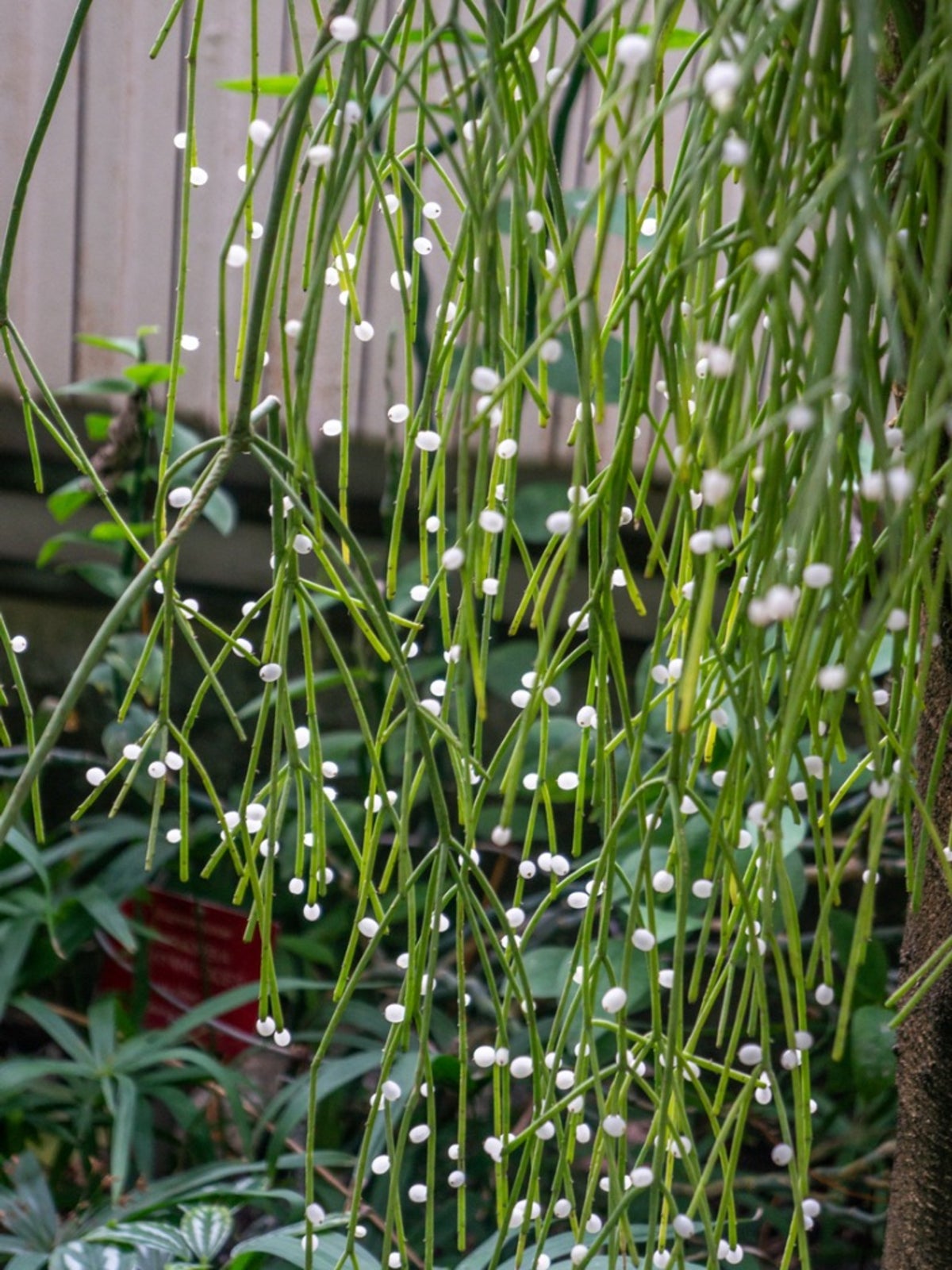Rhipsalis Mistletoe Cactus: How To Grow Mistletoe Cactus Plants


Mistletoe cactus (Rhipsalis baccifera) is a tropical succulent native to rainforests in warm regions. The grownup name for this cactus is Rhipsalis mistletoe cactus. This cactus is found in Florida, Mexico, and Brazil. Surprisingly, growing Rhipsalis requires shade to partial shade. While most cacti are found in hot, sunny, arid zones, mistletoe cactus is unique in its requirements for moisture and dim light. Take some tips on how to grow mistletoe cactus and enjoy this unique and entertaining looking plant.
About Rhipsalis Plants
Rhipsalis mistletoe cactus is also called chain cactus and grows epiphytically in its tropical forest home. The cactus has pencil thin succulent stems that may reach 6 feet (2 m.) in length. The thick skin of the stems do not produce thorns, but it does have almost imperceptible bumps on the surface of the plant. These plants are found clinging to tree crotches, in branch nooks, and nestled in rock crevasses. The Rhipsalis mistletoe cactus is easy to grow and has very minimal needs. It is perfect for the home interior in a northern or western window.
Requirements for Growing Rhipsalis
Mistletoe cactus is only hardy in USDA plant hardiness zones 9 to 10. The plant is most often found indoors and may simply be mounted on a piece of bark like an orchid or potted in a good cactus mix. If you are not prone to overwatering, you can plant the cactus in regular potting soil mixed with sand or other gritty material. The plant is used to living in the understory of the forest, where temperatures are at least 60 degrees F. (15 C.) and light is filtered through the high limbs. Growing Rhipsalis is practically foolproof as long as you mimic its native conditions.
How to Grow Mistletoe Cactus
Mistletoe cacti are easy to grow from cuttings. Seeds take way too long and they require very even environmental conditions. Take cuttings and let the severed end callus for a few days. Plant the callused end in a cactus mix or sand that has been lightly moistened. Cuttings root in two to six weeks. Seeds can be started indoors in flats filled with sand and peat. Moisten the medium and plant the seeds 1/4 inch (6 mm.) deep. Keep the medium barely moist until the plants germinate. Grow young plants in semi-shade and water when the surface of the soil is dry.
Mistletoe Cactus Care
Ensure that your mistletoe cactus is planted in well-drained soil. Potted plants benefit from a saucer filled with rocks and water to increase the ambient humidity in the home interior. The plant rarely needs fertilizing and has few other needs except moderate light and even moisture. Fertilize with a half dilution of cactus food from April to September, once per month. Water frequently in spring and summer, but suspend water in winter. If any of the stems are damaged, you can trim them off with a sharp, sterile knife. Use these as cuttings to start new Rhipsalis mistletoe cactus.
Gardening tips, videos, info and more delivered right to your inbox!
Sign up for the Gardening Know How newsletter today and receive a free copy of our e-book "How to Grow Delicious Tomatoes".

Bonnie Grant is a professional landscaper with a Certification in Urban Gardening. She has been gardening and writing for 15 years. A former professional chef, she has a passion for edible landscaping.
-
 Try The Trend – Turn Any Bed Into A Keyhole Garden With This Clever In-Ground Composter
Try The Trend – Turn Any Bed Into A Keyhole Garden With This Clever In-Ground ComposterKeyhole gardening is an efficient and sustainable practice that saves space. Get started on this DIY project quickly and easily with an in-ground composter.
By Bonnie L. Grant
-
 4 Superfast Composting Methods: Turn Waste Into Garden Gold In 30 Days Or Less
4 Superfast Composting Methods: Turn Waste Into Garden Gold In 30 Days Or LessTry the fastest composting methods to turbocharge your pile and transform kitchen scraps and garden waste into finished compost in just a few weeks.
By Mary Ellen Ellis